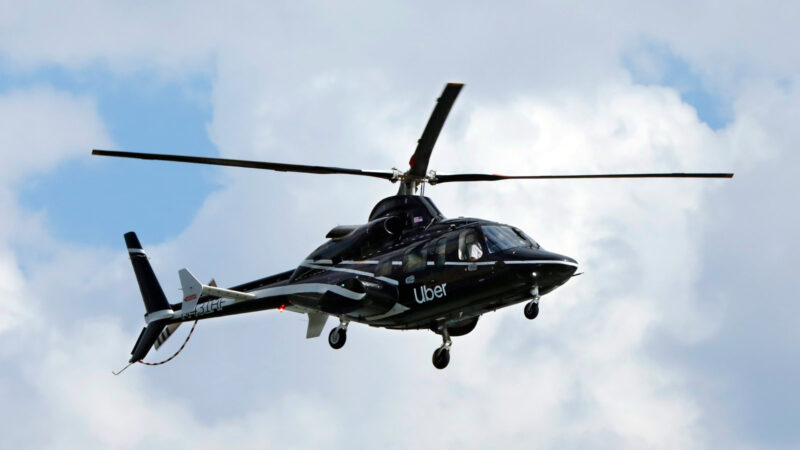Helicopters, known for their unique ability to hover, take off, and land vertically, are a marvel of engineering. A key question that often arises about these fascinating machines is, “How fast do they fly?”
This article explores the factors that influence helicopter speed, examining the intricacies of their design and operation that determine their velocity.
What Determines the Helicopter Speed?
The speed of a helicopter is limited by several factors, including aerodynamic challenges like retreating blade stall, where the rotor blade moving away from the direction of flight generates less lift. Other factors include rotor design, engine power, and overall weight.
| Factor | Description | Impact on Helicopter Speed |
|---|---|---|
| Rotor System | Helicopters fly primarily through their rotor system. The rotation speed of the blades provides lift and thrust. | Faster blade rotation increases lift and speed but is limited by physical and mechanical constraints. |
| Engine Power | The power of the engine determines how fast the rotors can spin. More powerful engines can drive the rotors at higher speeds. | Greater engine power can result in faster flight, though there’s a limit beyond which speed doesn’t increase proportionally due to drag. |
| Aerodynamic Factors | Includes the design of the fuselage, the shape of the rotor blades, and the helicopter’s weight. | Streamlined designs and advanced materials can reduce drag and increase speed, but must also consider stability and fuel efficiency. |
Speed Capabilities of Different Helicopters

Helicopters can vary significantly in their speed capabilities, depending on their design, purpose, and technology. Here’s a general overview:
- Average Cruising Speed: Most standard civilian helicopters cruise at speeds between 90 to 145 mph (145 to 233 km/h). This range covers a wide variety of helicopters used for different purposes, from personal and business travel to medical evacuations.
- Top Speed: The top speed of helicopters varies more significantly. Some of the fastest models can reach speeds above 200 mph. For instance, the Sikorsky X2, an experimental high-speed compound helicopter, achieved a record speed of 287 mph (460 km/h) in 2010. Another example is the Eurocopter X3, which reached 255 mph (410 km/h).
- Military Helicopters: These often have higher top speeds compared to civilian models due to their different design and performance requirements. For example, the AH-64 Apache, a widely used attack helicopter, can reach top speeds of about 182 mph (293 km/h).
Record-Breaking Speeds
The world of helicopter speed records is fascinating. The Sikorsky X2, for example, reached a speed of 287 mph (460 km/h), showcasing the potential of advanced rotor technologies and engine power.
These speeds are achieved through innovative designs that push the limits of conventional helicopter aerodynamics.
Comparing with Fixed-Wing Aircraft
It’s important to note that helicopters, in general, are not as fast as fixed-wing aircraft. The latter can travel at much higher speeds due to their aerodynamic shape and the way lift is generated.
However, their ability to hover and perform vertical takeoffs and landings offers a different kind of operational flexibility that fixed-wing aircraft cannot match.
Challenges in Achieving High-Speed Flight

One of the primary challenges in increasing helicopter speed is managing aerodynamic limitations. As helicopters move faster, they encounter issues like retreating blade stall and dissymmetry of lift, where the advancing blade generates more lift than the retreating blade.
These phenomena can lead to unstable flight and limit the maximum speed a helicopter can safely achieve.
Rotor Speed and Structural Integrity
The rotor system, essential for lift and propulsion, faces its own set of challenges at high speeds. There’s a limit to how fast the rotors can spin without risking structural damage or excessive wear.
The materials used in rotor construction, along with the design of the rotor hub and blades, play a crucial role in determining these limits.
Power Efficiency and Fuel Consumption
Efficient power usage is a significant concern for helicopters, especially at higher speeds. As speed increases, so does the power required, leading to higher fuel consumption. Balancing speed with fuel efficiency and range is a constant challenge in helicopter design.
How High Can a Helicopter Fly?
Typical Operational Altitudes: Most helicopters operate at altitudes between 1,000 and 10,000 feet. This range is optimal for a variety of missions, including transportation, rescue, and aerial work.
Maximum Altitudes: The service ceiling for many helicopters is in the range of 10,000 to 20,000 feet. However, some specially designed or high-performance helicopters can reach higher altitudes. For instance, the world record for the highest altitude achieved by a helicopter is held by a Eurocopter AS350, which flew up to 40,820 feet in 2005.
Limiting Factors: Several factors limit how high they can fly. As altitude increases, the air becomes thinner, reducing the amount of lift generated by the rotor blades. This thinner air also means less oxygen for combustion in the engine, limiting the power available to the rotors. Additionally, higher altitudes can lead to colder temperatures, potentially affecting the helicopter’s mechanical components.
High-Altitude Hovering: Hovering at high altitudes is particularly challenging due to the reduced air density. This is why helicopters operating at higher altitudes often require powerful engines and specialized rotor systems.
Practical Considerations: For most practical applications, helicopters do not need to fly at extremely high altitudes. Their ability to take off and land vertically, hover, and fly at low altitudes provides significant advantages in many situations, such as urban environments, mountainous terrain, and during rescue operations.
FAQs
Can helicopters break the sound barrier?
No, they can’t break the sound barrier. The fastest helicopters can reach speeds of around 250-300 mph, but this is far below the speed of sound, which is approximately 767 mph at sea level. The rotor design and aerodynamic limitations prevent them from reaching such high speeds.
How does altitude affect a helicopter’s speed?
Altitude can significantly affect a helicopter’s speed. At higher altitudes, the air is thinner, which means less lift is generated by the rotor blades. This can limit the maximum speed of a helicopter. Conversely, in denser air at lower altitudes, helicopters can often fly faster.
Why can’t helicopters fly as fast as airplanes?
Helicopters can’t fly as fast as airplanes primarily due to their rotor system, which is less efficient at generating forward speed compared to the fixed wings of an airplane. The rotor system creates more drag and has limitations on how fast it can spin without causing structural or aerodynamic issues.
Do different weather conditions affect helicopter speed?
Yes, different weather conditions can affect helicopter speed. Strong winds, especially headwinds, can slow a helicopter down, while tailwinds can help it move faster. Additionally, extreme weather conditions like storms or heavy rain can limit their operational speed for safety reasons.
Are there electric helicopters, and how do their speeds compare?
Electric helicopters are in development, though they are not yet widespread. Their speed is generally lower compared to the traditional ones due to current limitations in battery technology and power-to-weight ratios. As technology improves, it’s expected that these will become faster and more viable for various applications.
Summary
In conclusion, the speed of helicopters varies depending on their design and purpose, with most civilian models cruising between 90 to 145 mph. Military and high-performance helicopters can reach significantly higher speeds, with some experimental models exceeding 250 mph.
However, helicopters face inherent limitations in speed due to factors like rotor dynamics and aerodynamic challenges. Despite not being as fast as airplanes, they offer unique capabilities like vertical takeoff and landing, making them indispensable in various applications.
As technology advances, we can expect to see even faster and more efficient models in the future.
